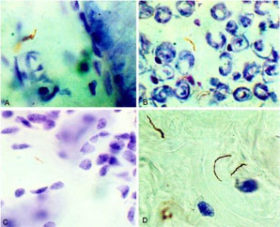BAL Leading the Way Series
“The opening of a network of Lyme disease clinics is the culmination of many years of tireless work and the vision of a small group of determined women over 10 years ago. We are extremely optimistic that the Lyme Clinical Trials Network will accelerate the development of new treatments for patients with post-treatment and persistent Lyme disease.”
—Linda Giampa, Executive Director, Bay Area Lyme Foundation
When Bay Area Lyme Foundation (BAL) was formed a decade ago, its mission was clear: to make Lyme disease easy to diagnose and simple to cure. “And that’s still our goal,” emphasizes BAL co-founder Bonnie Crater, as she reflects on the last 10 years. However, appreciating the magnitude of the Foundation’s audacious mission requires an understanding of two complex—yet inextricably linked—medical domains: the world of diagnostics, and the world of therapeutics.

The ‘Holy Grail’ for Lyme disease is an accurate diagnostic test—or better yet a suite of specifically designed tests for the different stages of acute and persistent Lyme disease. Although great strides are being made in understanding the infection and the disease’s progression, the ‘silver bullet’ of accurate diagnostic tests continues to elude us. The current diagnostics for acute Lyme (a two-step process with an ELISA either followed by a Western blot or another ELISA) are fraught with problems. These tests may miss up to 70% of acute Lyme cases or deliver false negative results. They are unreliable for detecting acute Lyme and are ineffective indicators for anyone with a persistent/chronic tick-borne infection. (Watch or listen to our Ticktective with Brandon Jutras, PhD, to learn why the current direct detection tests for Lyme are so inaccurate.)
Add to this the fact that FDA-approved therapeutics—or ‘cures’—have not evolved much in 10 years either and foment controversy. A quick internet search on ‘How to treat Lyme disease’ will offer information from the IDSA (Infectious Diseases Society of America) stating that a 10-14-day course of oral antibiotics, such as amoxicillin or doxycycline, will do the job for someone with an EM (Erythema migrans) rash who has early/acute Lyme. But anyone who has had Lyme disease, been treated, and then experienced a continuation of symptoms knows that this recommended course of intervention often fails to clear the infection, leaving some persistent Lyme patients in limbo, and health care providers without an approved treatment protocol. Simply put, this is the continuing underlying treacherous terrain of Lyme, throwing up challenges in both diagnostics and therapeutics.

